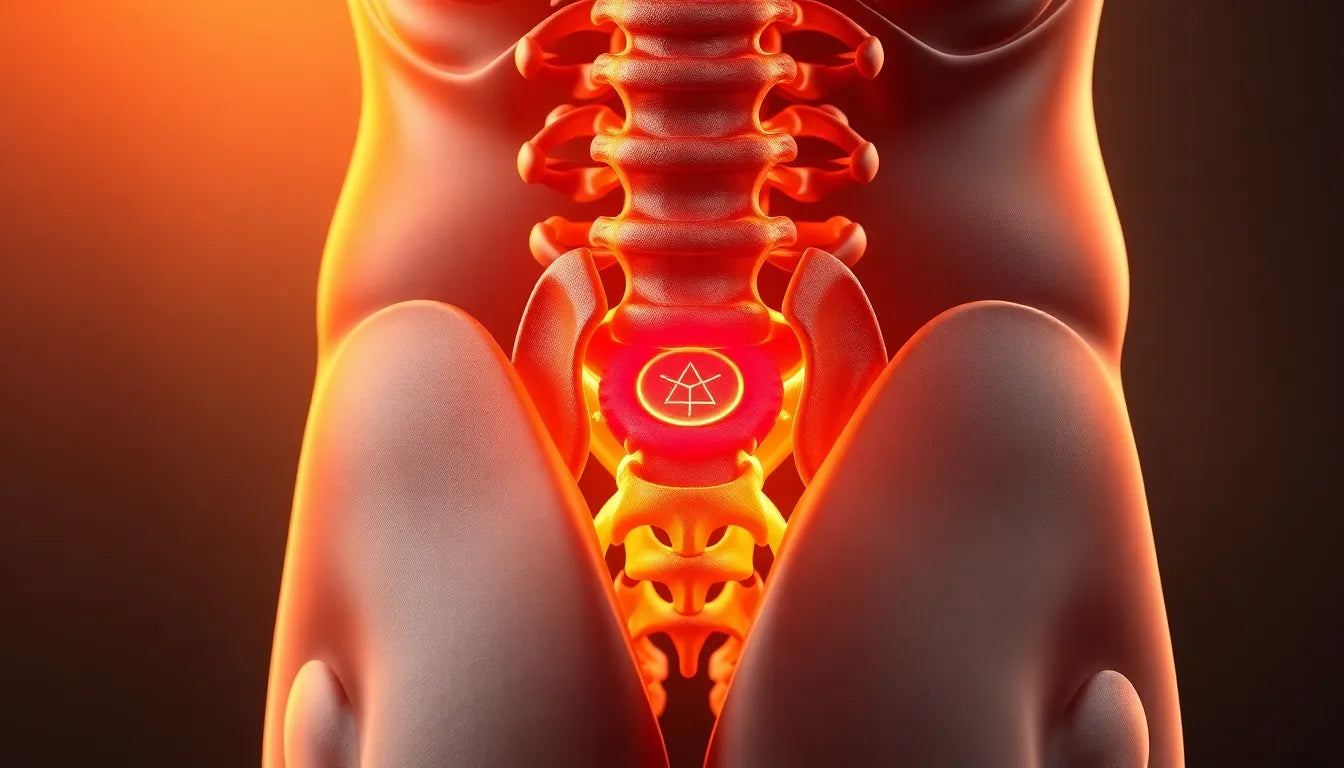A herniated disc can be a painful and disruptive condition, impacting daily life and mobility in significant ways. For those who experience it, the primary concern often revolves around the healing time and the recovery journey. Understanding what to expect can be crucial in managing both the physical and emotional aspects of this condition.
Understanding the healing process
While herniated discs are known for their discomfort, gaining insight into the healing process can help set realistic expectations and guide individuals through recovery. Each person's journey is unique, with recovery timelines varying based on several factors. Recognizing these differences is essential in framing a personalized approach to healing.
The recovery journey from a herniated disc is not a one-size-fits-all scenario. Factors such as age, activity level, the size and location of the herniation, and overall health play significant roles in determining the pace of recovery. For some, the path to healing may be swift, while others may require more time and patience.
What to expect in this blog post
This blog post aims to unravel the mystery of herniated disc recovery by providing a comprehensive look at typical healing timeframes, the stages of recovery, and the factors that influence healing. Readers will gain insights into the expected duration of recovery, learn about the different phases of healing, and discover practical tips for a faster recovery.
By the end of this post, you'll be equipped with the knowledge to navigate the recovery process with confidence, understanding what to expect and how to optimize your healing journey. Whether you're dealing with a recent diagnosis or supporting a loved one through their recovery, this guide offers valuable information to aid in the path to wellness.
Typical healing timeframe for herniated discs
Understanding the typical healing timeframe for a herniated disc is crucial in setting realistic recovery expectations. In the short term, most individuals experience a noticeable reduction in pain within 2 to 8 weeks. During this period, the initial symptoms, such as severe pain and mobility restrictions, tend to improve significantly. For many, this means a gradual return to daily activities, often within days to weeks, depending on pain tolerance and comfort levels.
However, the journey to full recovery extends beyond the immediate relief of symptoms. Long-term healing of the herniated disc itself can take anywhere from 3 to 6 months, with some cases extending up to 12 months. This extended timeline accounts for the disc's anatomical healing and the resolution of any residual symptoms. It's important to note that while pain may subside relatively quickly, the underlying tissue and structural healing continue over a longer period.
Phases of herniated disc healing
The healing process of a herniated disc unfolds in distinct phases, each characterized by specific symptoms and recovery milestones. Initially, the acute inflammation phase occurs within the first few days to two weeks. This stage is marked by severe pain, inflammation, and nerve irritation, often requiring rest and pain management strategies.
Following this, the progressive improvement phase spans from 2 to 6 weeks. During this time, symptoms begin to reduce, and mobility improves as inflammation subsides. Patients often find increased comfort in daily movements, although caution is advised to avoid re-injury.
The stabilization or remodeling phase, occurring between 6 to 12 weeks, focuses on reducing flare-ups and strengthening the affected area. This stage is crucial for preventing future injuries and involves physical therapy and exercises tailored to the individual's needs.
Finally, the long-term management phase extends beyond 12 weeks, emphasizing ongoing prevention and maintenance. This phase involves consistent attention to posture, exercise, and lifestyle modifications to ensure a sustained recovery and avoid recurrence.
Factors influencing herniated disc recovery
Several key factors influence the recovery timeline and success for individuals with a herniated disc. Age plays a significant role, as younger individuals often heal faster due to better tissue regeneration capabilities. Additionally, the size and location of the herniation, along with the person's overall health and activity level, can impact the speed and effectiveness of recovery.
Adherence to recommended physical therapy and treatment plans is another critical factor. Engaging in early, gentle activity as soon as comfort allows can facilitate healing and prevent deconditioning. Treatments aimed at reducing inflammation and pain, such as medication and cold therapy, are particularly beneficial during the initial stages of recovery.
Ultimately, a personalized approach that considers these factors can significantly enhance the healing process, allowing individuals to regain mobility and return to their daily routines more efficiently.
Surgical recovery and considerations
In certain cases, conservative treatments for a herniated disc may not suffice, and surgical intervention becomes necessary. Surgery is typically considered when symptoms persist or worsen despite non-surgical approaches, or when there is significant nerve compression causing weakness or loss of function. The recovery timeline post-surgery can vary, but most individuals can expect to return to normal activities within 2 to 4 weeks. However, full recovery, particularly for engaging in strenuous activities, may require up to 12 weeks or more.
Post-surgical recovery focuses on gradual reintroduction to daily activities, with an emphasis on physical therapy to restore strength and flexibility. Patients are encouraged to adhere to their surgeon's guidelines and engage in exercises that support healing and prevent future issues. It's important to remember that surgical recovery is a process that requires patience and commitment to rehabilitation protocols.
Tips for a faster herniated disc recovery
While the natural healing process of a herniated disc takes time, there are strategies that can aid in speeding up recovery and improving outcomes. One of the most effective approaches is to engage in early, gentle activity as soon as comfort allows. This helps maintain mobility and prevent muscle deconditioning, which can otherwise prolong recovery.
Physical therapy plays a crucial role in the recovery process, offering tailored exercises that strengthen the back and core muscles, improve flexibility, and enhance posture. Incorporating lifestyle modifications, such as ergonomic adjustments at work and home, can also support recovery by reducing strain on the spine.
Long-term prevention is equally vital. Maintaining a healthy weight, engaging in regular exercise, and practicing good posture can significantly reduce the risk of recurrence. Additionally, staying mindful of body mechanics during daily activities, such as lifting and bending, can help protect the spine from further injury.
Frequently Asked Questions
How long does it take for a herniated disc to heal?
Most herniated discs begin to show improvement within 2 to 8 weeks, with significant pain reduction often occurring in this period. Full recovery, including anatomical healing, can take up to 12 months in some cases, depending on individual factors.
What are the signs that my herniated disc is healing?
Signs of healing include a reduction in pain, increased mobility, and fewer flare-ups. Improvements in daily activities and comfort levels are also indicators that recovery is progressing.
When can I return to normal activities?
Many individuals can return to daily activities within days to weeks, depending on their comfort and pain levels. It's important to listen to your body and avoid activities that exacerbate pain.
What should I avoid during recovery?
During recovery, it's crucial to avoid heavy lifting, sudden movements, and activities that trigger pain. These actions can hinder the healing process and potentially worsen the condition.
When should I consider surgery?
Surgery should be considered if symptoms persist or worsen despite conservative treatment. Consulting a healthcare professional can help determine if surgical intervention is necessary based on your specific condition and symptoms.
Sources
- ADR Spine. "Understanding Herniated Disc Healing Phases."
- Spine MD. "Stages of Herniated Disc Recovery."
- Cleveland Clinic. "Herniated Disc Overview and Recovery Expectations."
- Chicago NeuroPain. "Variability in Herniated Disc Recovery Times."
- HealthCentral. "Practical Advice for Herniated Disc Recovery."
- Advanced Spine Center. "Physiological Stages and Surgical Recovery."
- MoreGoodDays. "Symptom Improvement and Long-term Management."























